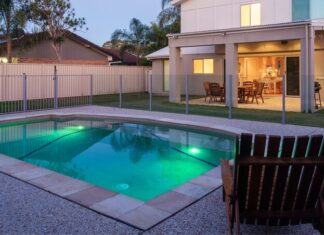The rise of short-term holiday rentals like Airbnb and Stayz changed the way we travel, but they’ve also created well-founded concerns about the impact on local communities. Locally, much have been written about STAs in the Noosa Today newspaper with articles by Mayor Frank Wilkie, Councillor Amelia Lorentson, Phil Jarratt and Fiona Jacobs and others. Talented writers, and researchers like former Mayor Tony Wellington, Rowland Hill, etc., and Rod Richie (short YouTube video titled “Where Neighbours Are Strangers) “, have also penned/screened excellent information. In view of the foregoing, I wanted to express my views and observations on this much debated topic.
On 1 February 2022, Council introduced an approval process that required all short-stay let property owners to appoint a 24-hour contact to act on complaints within 30 minutes, and a code of conduct for guests aimed at ensuring guests behaviours do not impact on surrounding residents or amenity. More recently, Mayor Frank Wilkie reported (Noosa Today – Fri 20 Dec 2024) that a key purpose of the planning scheme amendments was to ensure that all residential zones serve as neighbourhoods for residents, not STA businesses and to limit the loss of dwellings for permanent residents to STA. This was a very commendable effort on the part of Council but not without its shortfalls.
Instead of prohibiting STA’s outright in residential areas, Council compromised in allowing “local mums and dads” to share in the windfall financial gains attributed to STAs, whereby a permanent resident short stay lets for a limited time of no more than 4 times and maximum of 60 days per calendar year at their principal place of residence. In other words, the opportunity remains for dwellings to be part-time mini hotels contrary to the strengthening of the social fabric of the community and resulting in negative impacts on the neighbourhood and tourist facilities.
Principal place of residence STAs are accepted developments subject to requirements and do not require planning approval. They do not involve public notification, allow no input and no appeal rights for those residents directly affected. I asked Council staff if I could have a map identifying the location of approved short term accommodation premises and was told to drive up and down the streets to see if there was a sign at the frontage of properties indicating such use. In addition, I could not get an indication of the basic criteria used by Council staff to determine suitable locations for STAs prior to approval and whether or not STAs required minimum separation distances or what percentage of existing houses in a street could be STAs.
The Noosa Plan – Driveways and parking code outcomes require parking spaces and associated manoeuvring areas to be safe and functional and to meet the reasonable requirements of the particular land use. For STAs, the stipulated vehicle parking requirement (as per Table 9.4.1.4) for a small dwelling is one covered space up to two bedrooms and two covered spaces for three or more bedrooms. This is nowhere near enough to cater for 3-to-5 bedrooms STAs at 2 guests per room if most individual guests come by car or the premises is an older dwelling with only a couple of car parking spaces. Maybe inadequate STA planning considerations and parking space requirements explain why previously quiet streets have become congested with traffic and street parking?
I normally consider the vehicle parking capacity of the street including locations of vehicle crossovers, the road pavement width and related vehicle turning movements in assessing planning applications. In the case of an STA principal owner/family being overseas/holidays, I’d check if their vehicles were left in the garages or if the garages were used for storage purposes to clear bedrooms to make way for guests? Hotels and motels have site managers/supervisors and usually provide onsite car parking facilities for staff and guests/customers. There should therefore be no street parking provided for mini hotels above normal household requirements. Such parking would, in my view, be a clear commercial imposition onto the existing residential infrastructure and amenity.
Brisbane’s Lord Mayor Adrian Schrinner stated (BCC – Media Announcements, 15 June 2022) that our suburban streets were never meant to be home to mini hotels that house different tenants every week, and that this surge in short-term accommodation over recent years also increases compliance costs for Council as a result of homeowners suddenly living next door to what’s become a commercial property.
In a Noosa Today Soapbox article (29/07/2021) titled “STAs are not the enemy” Councillor Amelia Lorentson stated that we need to stop blaming and punishing mum and dad investors with mortgages, families and life plans who are providing short term visitor accommodation, and that blaming STAs for depletion in housing supply as the only reason must stop and that limiting the number of STAs will not solve the housing crisis. She also stated that the issues to do with STA are about “management and control” of STAs, and advocated for responsible management, limiting numbers of people in each home, enforcing noise restrictions, and a Mandatory Code of Conduct with teeth.
It looks like Councillor Amelia Lorentson may not have been aware of Council’s Services and Organisational Committee’s 40-page STA-Online Platform Issues paper dated 12 February 2019 that reported it is reasonable to contend that Airbnb is in part succeeding as a commercial enterprise at the expense of community and residential liveability, by contributing to the negative consequences of increased visitation and infiltration into residential areas. The Issue paper also reported that online accommodation share economy platforms can be viewed as a symptom of the tourist industry’s almost exclusive focus on growth, which has historically had little or no strategic consideration for the sustainability of tourism growth in a region, and that it is apparent that the disruption caused by the prevalence and popularity of online accommodation share economy platforms has created a number of challenges. Some of these challenges will remain despite the recently approved amendments to the planning scheme, such as:
•The influx of tourists in an otherwise quiet residential area impacting on public and private residential amenity, with tourists generating increased noise, waste issues, traffic and parking congestion. •A range of land use planning concerns •The risk of tourism gentrification and over tourism.
Interestingly, the issue paper reported that overtourism can be defined as the excessive growth of visitors leading to overcrowding in areas where residents suffer the consequences of temporary and seasonal tourism peaks, enforcing permanent changes to their lifestyle, access to amenities and general well-being. Remarkedly, it identified the key indicators of overtourism which in my opinion and that of others were evident back in 2019: –
1. Strained local amenities and infrastructure.
2. Road and traffic congestion.
3. Residents priced out of the home rental and ownership market.
4. Residents displaying lack of tolerance for the tourism sector and visitors.
So, was Councillor Amelia Lorentson right at the time in saying that it’s all about “management and control” of STAs, or is “management” just an easy way to avoid difficult decisions as questioned by Fiona Jacobs (former candidate for Noosa Council) in her article “Has Noosa’s STA management really improved?” Noosa Today – 05/12/2024. Amelia said that limiting the number of STAs will not solve the housing crisis. Fiona said that the proliferation of STAs has worsened Noosa’s housing affordability crisis, with long-term rental properties being converted into short-stay accommodations.
Noosa Residents Against Unregistered Short-Term Accommodation (NRAUSTA) have lobbied for full information transparency and wanted the numbers of properties offered for STAs to be available and have expressed concerns about the ongoing degradation of the amenity of their neighbourhoods through noise, illegal parking and traffic in once-quiet streets (“Will STA be the hot Issue?” by Phil Jarratt – Noosa Today -27/01/2024). Council’s Guide to Good Management of Short Stay Letting and Home Hosted Accommodation (2023) recommends (it’s not a law) that a “contact person” meet and greet guests to provide them with the code of conduct for guest behaviour and any other “house rules” relevant to the property, and to advise of the need to respect the peaceful enjoyment of surrounding neighbours’ homes and residential amenity. This could be seen as a sort of crash educational course on good behaviour, etiquette, common sense and duty, and in any case is not the time for education courses. The guide also “recommends” that the contact person or host meets with surrounding neighbours and/or their body corporate to discuss the short stay letting of the property and address in advance, and rectify, any potential issues or amenity concerns. There is no mention of providing a record of any such meetings, time and place of meeting, what was discussed or who attended etc., and no mention of road rules.
Not surprisingly, after devolving “management” responsibility down to a “contact person” there are no guarantees that guests will abide with mandatory codes of conduct or any road rules, and in the excitement and rush to arrive at their destination visitors may inadvertently create a disturbance and infringe on basic road rules. My own experience with a Principal place of residence STA in Tewantin, just prior to adoption of Council’s code of conduct, was that there were 7 vehicles, 1 motor cycle and 1 boat associated with the use. On-site and street parking was chaotic. Road and parking infringements included: –
1. Parking of vehicles within the road reserve on the cross-over;
2. Vehicle parking across part of a neighbouring cross-over;
3. Vehicles facing the wrong way in the street; and
4. Vehicles parking too far away from the kerb preventing through traffic.
Aside from the unsightly, car yard type presentation (see photos-edited with Picsart) and locals forced to drive around the block to get home, implications are that excessive vehicle manoeuvres arising from the above-mentioned parking arrangements were high risk. Visibility and sight distances in the street were non-existent for pedestrian movement except along the roadway, a risk in itself, particularly with the local resident parking arrangements on the other side of the street. This is a very serious matter, as one child is killed or seriously injured every week in Australia from low-speed vehicle runover (LSVRO) with the elderly becoming a more prominent age group. Similar illegal parking on nature strips, cross-overs and the street not associated with STAs is evident in nearby residential streets and throughout Noosa with no noted Council enforcement actions.
Making sure all applications are impact accessible would solve the transparency issue and clarify the number of guests involved, formal trailer, boat and car parking arrangements, and allow for more informed complaints if any issues arise. But, wouldn’t it have been easier to just ban STA uses outright (where possible) from our residential areas to eliminate all their associated problems and the need for a Short Stay local laws team who could then police other enforcement matters.
Council needs to start making decisions by looking through “Noosa Character” lenses and at the wider picture of what is happening around them like the rampart traffic and car parking congestion, over tourism, and over development. So, thank you Mayor Frank Wilkie, for the planning scheme amendments update and reminding us to help maintain Noosa’s treasured lifestyle and character.
(Johann Holdysz is a Tewantin resident, town planning/development consultant)







